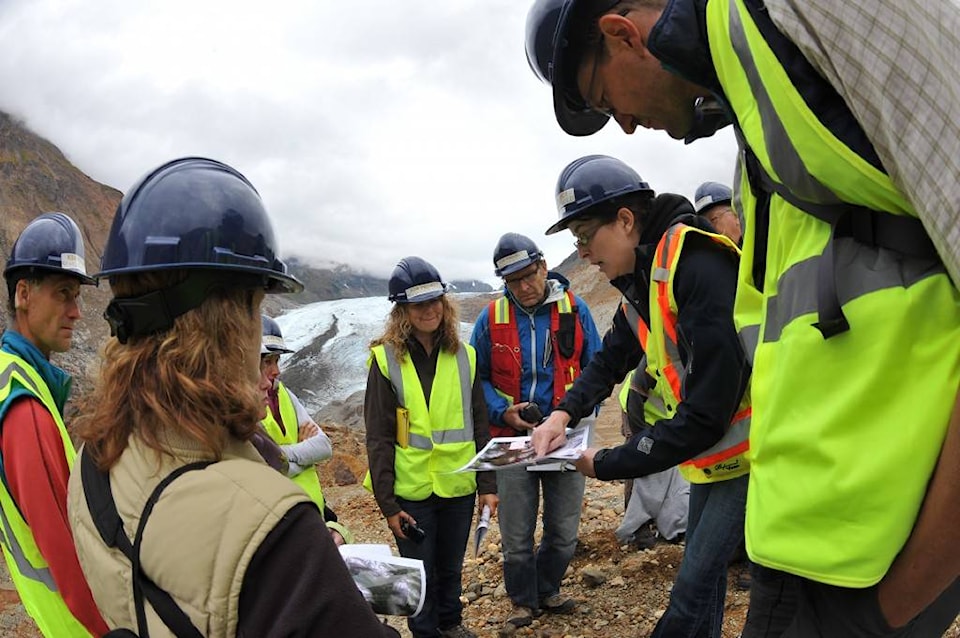Seabridge Gold has started geotechnical drilling in northwest B.C. along the proposed route of the Mitchell Treaty Tunnels (MTT).
The MTT will connect the proposed gold and copper Kerr-Sulphurets-Mitchell mine site (KSM) and the nearby mill site, which will allow Seabridge Gold to transport ore from the mine to the mill. It will also transfer electricity, fuel and consumables in the other direction.
It is one step in the early development of the major open pit mining project.
“Pretty much we are on track at KSM, I mean you know we started working at KSM in 2006 ourselves, we’ve now spent over $300 million ourselves on the project,” said Rudi Fronk, chief executive officer of Seabridge Gold.
“It’s a project that takes a lot of work.”
Drilling will identify the condition of the rocks along the MTT route and provide information about what kind of excavation technology the company should use when it starts tunneling.
The parallel twin 23-kilometre tunnels are more cost-effective and also have fewer environmental impacts than land transport over the 50-plus year life of the KSM mine. Instruments will be placed along the route to continue to collect data and further inform the design of the tunnel.
A joint venture between Tudor Gold Corp., American Creek Resources Ltd. and Teuton Resources Corp. holds mineral tenure in the proposed MTT route. The joint venture has not found an ore body yet and Seabridge holds rights to pursue the tunnel.
“We’ll continue on with our plans and if they do find something I’m sure we’ll be good neighbors, we’ll sit down and see what could be done in terms of perhaps moving the tunnel route if needed,” Fronk said.
Seabridge Gold’s permit was issued by the provincial government on June 30, and allows for up to 40 holes. However, the COVID-19 pandemic has caused the company to scale back the operation. This summer’s drilling will use one rig to drill around 4,000 metres in 10 holes.
“We have less people on site, we did curtail our program slightly to accommodate the COVID requirements and just as important also First Nations have their own requirements that we are following as well,” Fronk said.
He estimated around 80 per cent of the planned work for 2020 across all Seabridge Gold’s projects will be completed on schedule and the difference will be made up in the future.
After seven years of work, the project passed an environmental assessment in 2014. According to Seabridge Gold, the open pit mine will be medium sized in relation to others in the world. It is located 65 kilometres north of Stewart and will be split between two sites in different alpine valleys – the mine itself to the west, and the mill and tailings facility to the east.
According to KSM Mining ULC., a subsidiary of Seabridge Gold, the proven and probable reserves at KSM include 38.8 million ounces of gold, 183 million ounces of silver and 10.2 billion pounds of copper.
Seabridge Gold calls the KSM deposit the largest undeveloped gold project in the world. The company owns 100 per cent of the project, but is looking to partner with a major mining company due to the project’s large scale.
“We only get to do this once and it’s got to be with the right partner under the right terms, so when we finally get that done we’ll have a partner in place that will co-develop the asset with us,” Fronk said.
READ MORE: Tahltan reach benefits agreement over Seabridge’s massive KSM gold mine project
ben.bogstie@terracestandard.com
Like us on Facebook and follow us on Twitter.
